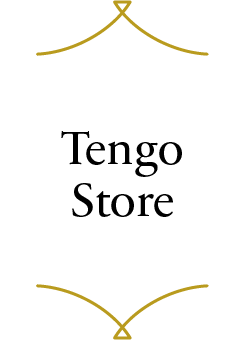Uoi’s KABAYAKI
The traditional taste created from
continuing inherited distinguished
techniques for many years

Fine selection of eel by the excellent
eye of professionals
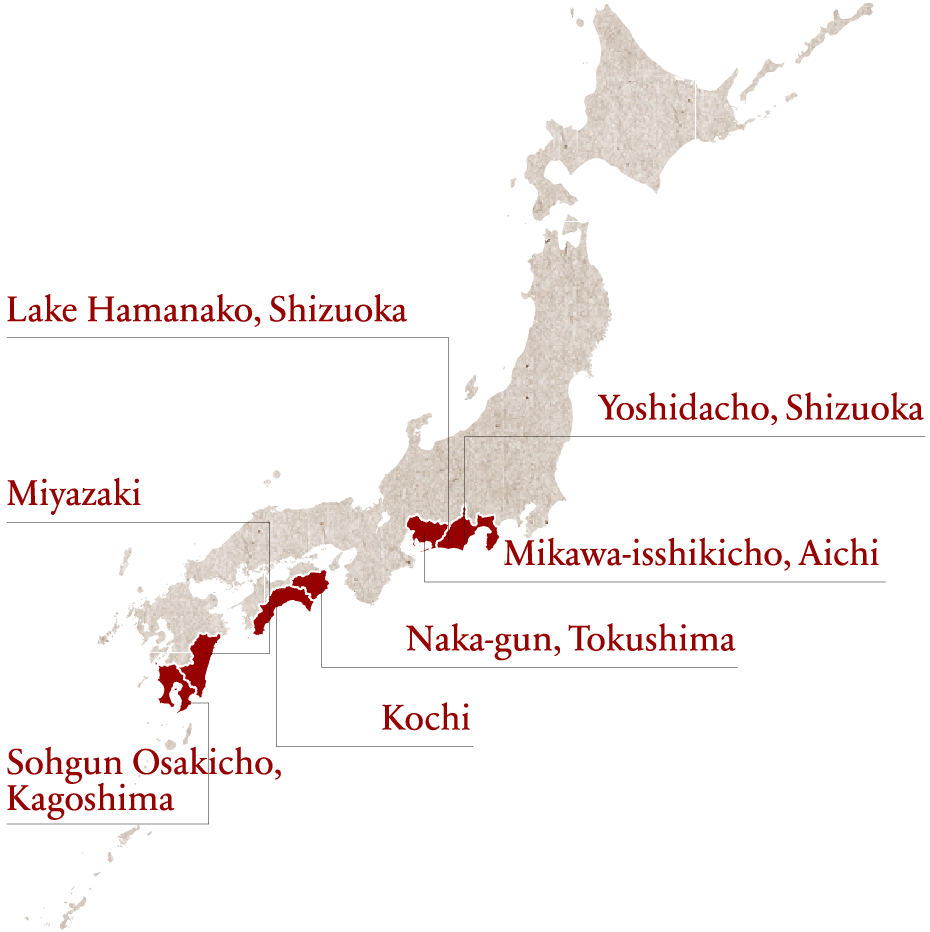
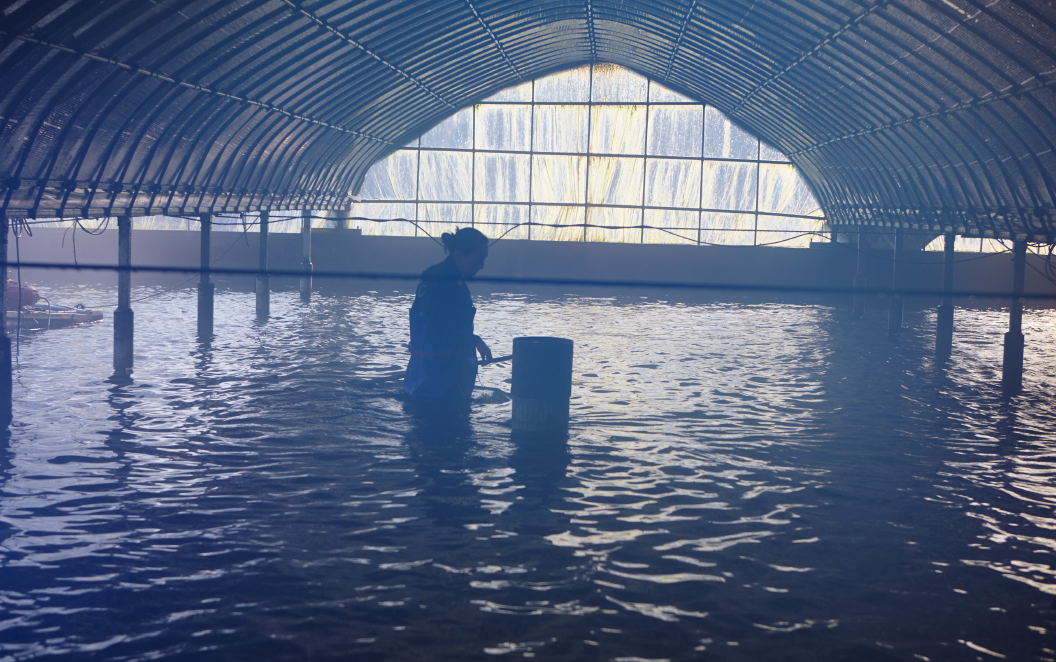

-
- Lake Hamanako, Shizuoka
- The history of producing eel in Lake Hamanako goes back for many years. Although the number of eel is decreasing, the “Tobi” which is the type of eel that eats whitebait very fast, is one of the superb Unagi which you can find in early autumn.
-
- Mikawa-isshikicho, Aichi
- Mikawa is the second largest eel producing area in Japan. Although the amount of water is less compared to other areas, the eel farms in Mikawa pulls the fresh water from the Yahagi river.
-
- Kochi
- Kochi is the second oldest area for raising eel. The number of eel farms have decreased, but still produces great eel in the traditional way.
-
- Sohgun Osakicho, Kagoshima
- There are many large sized eel farms in this area which uses the rich water of Kirishima and controlled by modernized facilities.
-
- Yoshidacho, Shizuoka
- Yoshidacho has been well known as “the town of eel” where eels are farmed in a rather warm climate, which makes the eel flavorful.
-
- Naka-gun, Tokushima
-
The quality of the eel produced by the rich water form the Naka river and farmers with inquiring minds suites the Kansai style grilling.
[Uoi’s Own Unagi Farm]Lake Hamanako, ShizuokaWe carefully raise our Unagi in a nearby lake, where we can keep a close eye on each one. This reduces their stress and helps them grow into high-quality Unagi, with just the right amount of fat.
-
- Miyazaki
- Miyazaki is the third largest eel producing area in Japan. The warm climate and fresh ground water of Miyazaki is suited for eel farming. The feature of Miyazaki eel is soft and less muddy.
We select the finest Unagi of the day
from Uoi’s tateba, where Unagi are
brought from all over Japan.
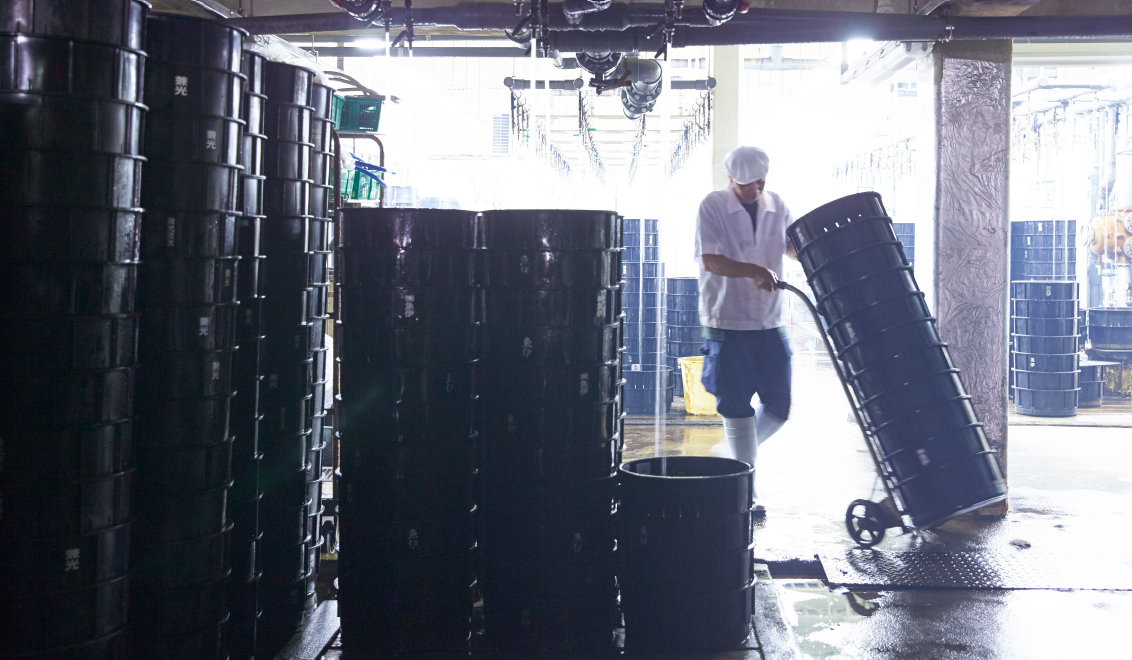
Uoi has a “Tateba” (fish tank) with a capacity that can keep 30 tons of water.
The daily amount of eels that arrive to Uoi is between 1 to 2 tons.
Uki is able to select the finest eels throughout Japan.
Arrival
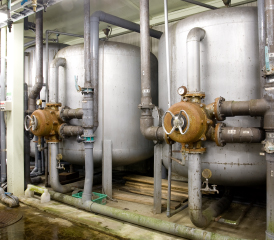
-
 Underground Pump (Water Quality Control)
The eels are placed in a fish tank for a day filled with fresh water pumped up from 120 meters below underground. The pH value of the water is controlled by letting the water pass through a filter to get rid of iron and other substances. The water temperature is also controlled to let the eels relax which help them be in their best condition before they are sent out.
Underground Pump (Water Quality Control)
The eels are placed in a fish tank for a day filled with fresh water pumped up from 120 meters below underground. The pH value of the water is controlled by letting the water pass through a filter to get rid of iron and other substances. The water temperature is also controlled to let the eels relax which help them be in their best condition before they are sent out.
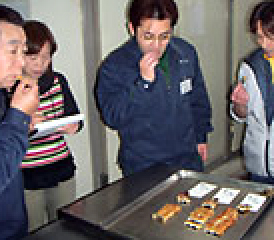
-
 Quality Check
Every eel passes through a quarantine check (Bacillus subtitles ATCC6633) before they are released. After they pass, the eel from each lot goes through the tasting check. The selected eel gets grilled (without the sauce) and being tasted by 5 professionals and examines the taste, smell, and quality. The eel will not be released unless it is approved by all 5 examiners.
Quality Check
Every eel passes through a quarantine check (Bacillus subtitles ATCC6633) before they are released. After they pass, the eel from each lot goes through the tasting check. The selected eel gets grilled (without the sauce) and being tasted by 5 professionals and examines the taste, smell, and quality. The eel will not be released unless it is approved by all 5 examiners.
Selecting
Meeting the Demands of Each Client
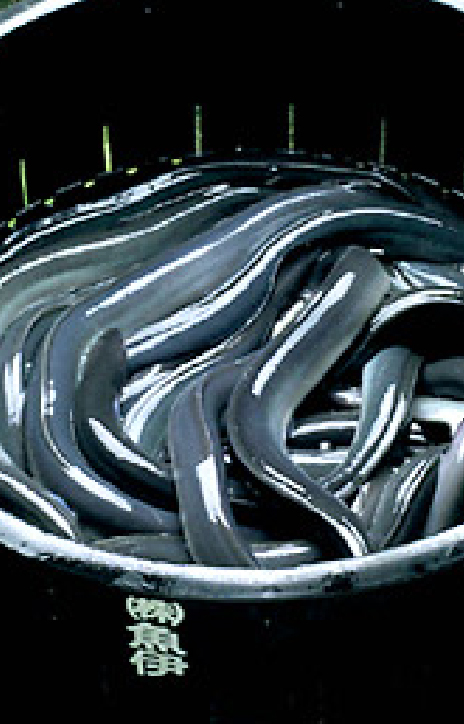
The eels are divided into certain categories. The eels need to be sorted depending on their size and taste in order to meet the clients’ demands. It is also important to sort the eels into certain categories so that the restaurants can maintain there quality and taste without having trouble. The quality or taste differs during the season, so we put effort in sorting the eels to maintain the quality.
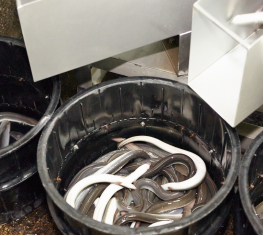
-
 Selecting by Machine
The eels are sorted by size with a machine after they have been gathered from each area of Japan. The eels are divided into several groups between 20g and 30g to match the clients’ needs which helps them having less trouble when cooking.
Selecting by Machine
The eels are sorted by size with a machine after they have been gathered from each area of Japan. The eels are divided into several groups between 20g and 30g to match the clients’ needs which helps them having less trouble when cooking.
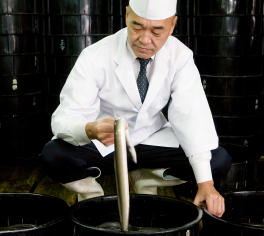
-
 Selecting by Hand
The characteristics of each eel differs even if they come from the same area or same lot. The cooking method of the eel also differs in each area of Japan. At Uoi, the eels are carefully sorted by the hands of the professionals in order to meet the clients’ specific needs.
Selecting by Hand
The characteristics of each eel differs even if they come from the same area or same lot. The cooking method of the eel also differs in each area of Japan. At Uoi, the eels are carefully sorted by the hands of the professionals in order to meet the clients’ specific needs.
Opening (hiraki),
Skewering (kushiuchi) and
Grilling (yaki)
We enthusiastically apply
our traditions and refined skills
throughout all preparation
methods.
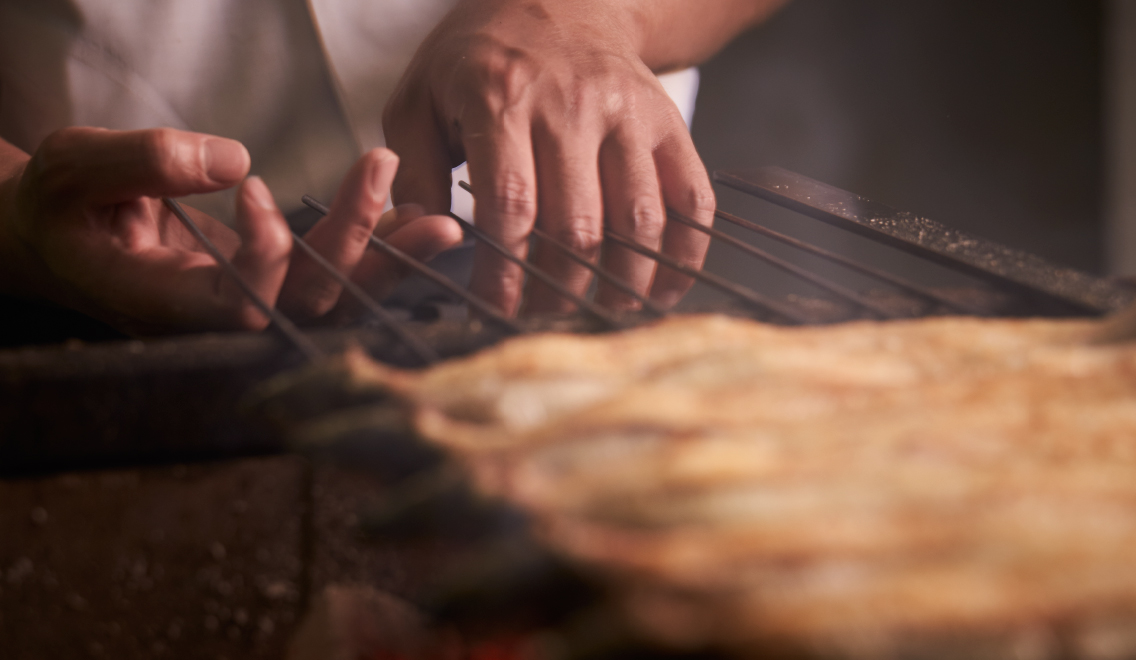
Opening(Hiraki)
Placing the “Second Cut”

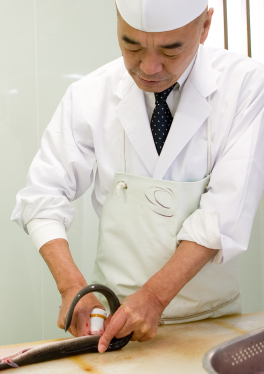
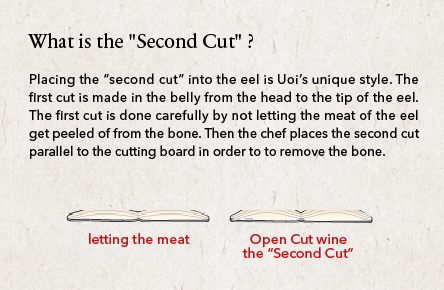
-
 Uoi Style Open Cutting
Placing the “second cut” into the eel is Uoi’s unique style. The first cut is made in the belly from the head to the tip of the eel. The first cut is done carefully by not letting the meat of the eel get peeled of from the bone. Then the chef places the second cut parallel to the cutting board in order to to remove the bone.
Uoi Style Open Cutting
Placing the “second cut” into the eel is Uoi’s unique style. The first cut is made in the belly from the head to the tip of the eel. The first cut is done carefully by not letting the meat of the eel get peeled of from the bone. Then the chef places the second cut parallel to the cutting board in order to to remove the bone.
Skewering (kushiuchi)
The Skewering Which Leads to
Uoi’s Traditional Taste
 Uoi Style Skewering
Uoi Style Skewering

-
In order to grill the Unagi equally, the Unagi must be sorted by the SUJI.
The length of the eel varies even though they may weigh the same, so they must be sorted from long to short eels. When skewering the eel, the cook carefully skewer into the hardest part of the bone, which helps the eel from getting torn up. - Then the second and third skewers are placed to form an arch which enables the chef the lift the whole eel without using both hands.
- The meat of the eel turns soft as it gets grilled, so the first three skewers are placed to make the flipping process easier.
- After the skewers are placed , the eels are placed inside the refrigerator for 4 to 5 hours so that the eels will be in the best condition for grilling.
Grilling (yaki)
A Life-time Career Experience
for Distinguished Grilling Skill
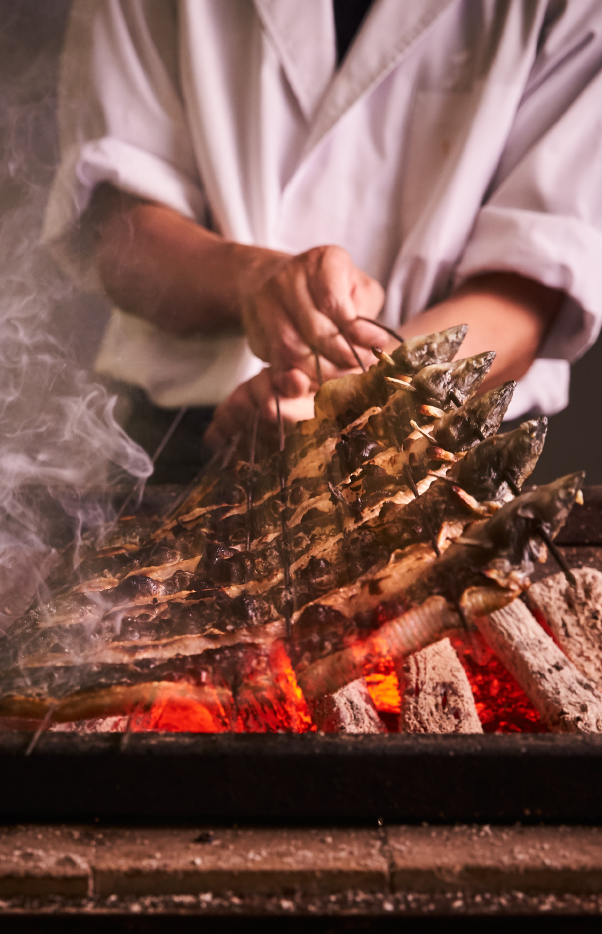
Uoi's grilled eels are crispy on the outside, juicy fluffy on the inside. From preparing the fire bed to skewering and final coating of the eel, grilling the eel is a series of operations and it takes a “life-time career experience” to become a dedicated chef. The condition of the eel varies daily because of the temperature and seasons, even a well experienced chef requires high skills to grill.
-
- 1Preparing the “fire bed”
- Before the eels get grilled, the chef must check the condition of the eel. The chef adjusts the fire by setting the charcoal depending on the type of eel that is about to be grilled,
-
- 2Grilled from the belly
- The eel is first grilled by a rather strong fire, preventing from the meat to get loose and the skin to curl up.
-
- 3Skewering the “Nui-gushi”
- While grilling , the meat becomes soft and the skin tries to curl up. In order to prevent from the meat getting separated from the skin, the chef carefully places a skewer in a sewing manner, which is called the “Nui-gushi.” Gold skewers are often used to help the heat conduct into the meat, also helping the oil between the meat and skin to boil which brings out the flavor.
-
- 4Flipping
-
There is an expression in Japanese that says “Let the Daimyo cook the fish” which means “The fish should stay put and not to be moved” (The Daimyo - or warlord often doesn’t move much)
But when it comes to eel, it becomes a different story. The eel must be flipped constantly in order to to be heated equally. This also helps the meat to become soft and juicy and getting rid of the small bones by burning them. Before the eel is covered by sauce, the eel is sprayed with a little amount of sake until the eel is grilled into a golden brown crispy color.
-
- 5The Sauce
- While the Unagi is getting grilled, the cook pours the sauce on the Unagi using a ladle. However, the cook carefully pours the sauce equally on the surface which takes a lot of experience to do so.
-
- 6Final Coating
- The Unagi is flipped over several times until the outside gets crispy, followed by the final coating of the sauce. This makes the Unagi a glossy look waiting to be served.

Sauce, Charcoal and Rice.
Each ingredient is chosen
with the utmost care
in order to bring out
the Unagi's full deliciousness.
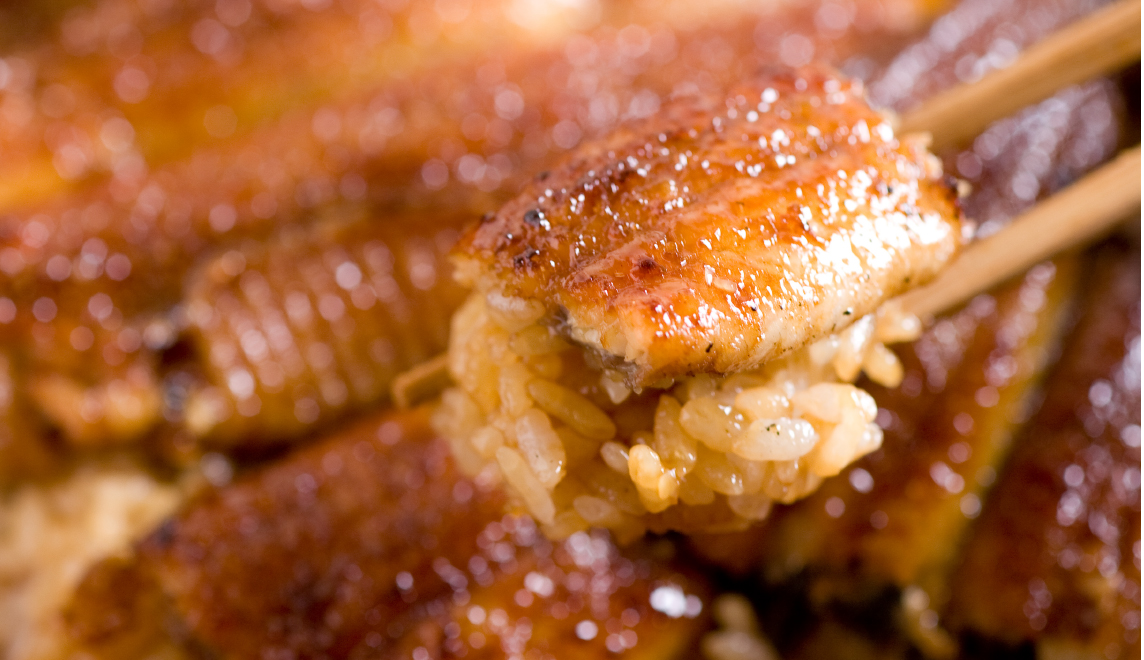
Unaju
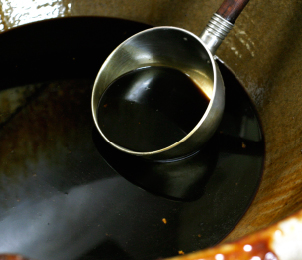
-
 Uoi's sauce, cultivated by cistory
Our prized secret sauce is made according to Uoi's original recipe using only simple but expertly chosen ingredients. In addition to the sweet seasoning that draws out the Unagi's natural flavor, the flavor is further enriched by using Unagi fat. By combining our grilling sauce (yakidare), which is made by stirring in the fat that drips from the Unagi cooked every day, with freshly
prepared simmering sauce (takidare), we are able to create incredible smoothness and flavor. At Uoi, we maintain our sauce each and every day in order to preserve and protect our traditional flavor.
Uoi's sauce, cultivated by cistory
Our prized secret sauce is made according to Uoi's original recipe using only simple but expertly chosen ingredients. In addition to the sweet seasoning that draws out the Unagi's natural flavor, the flavor is further enriched by using Unagi fat. By combining our grilling sauce (yakidare), which is made by stirring in the fat that drips from the Unagi cooked every day, with freshly
prepared simmering sauce (takidare), we are able to create incredible smoothness and flavor. At Uoi, we maintain our sauce each and every day in order to preserve and protect our traditional flavor.
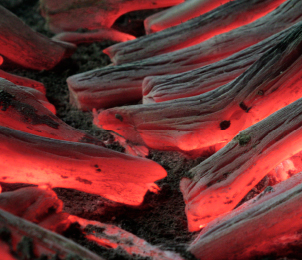
-
 Bincho charcoal grills Unagi to the bone
Before the eels get grilled, the chef must check the condition of the eel. The chef adjusts the fire by setting the charcoal depending on the type of eel that is about to be grilled,
Bincho charcoal grills Unagi to the bone
Before the eels get grilled, the chef must check the condition of the eel. The chef adjusts the fire by setting the charcoal depending on the type of eel that is about to be grilled,
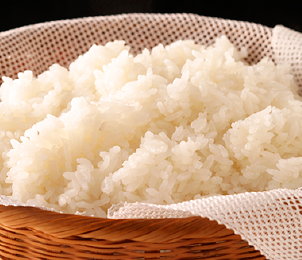
-
 Gourmet Rice that picks up the sauce well
Uoi's rice is a blend of 3 famous Japanese rice brands. In order to make rice with the best possible condition and texture for our Unajyu, we change the mixture of the blend and the cooking style in accordance with the season. Our rice has a soft, delicate texture that doesn't harden even when cold. Good rice serves to make our Unajyu even tastier.
Gourmet Rice that picks up the sauce well
Uoi's rice is a blend of 3 famous Japanese rice brands. In order to make rice with the best possible condition and texture for our Unajyu, we change the mixture of the blend and the cooking style in accordance with the season. Our rice has a soft, delicate texture that doesn't harden even when cold. Good rice serves to make our Unajyu even tastier.

